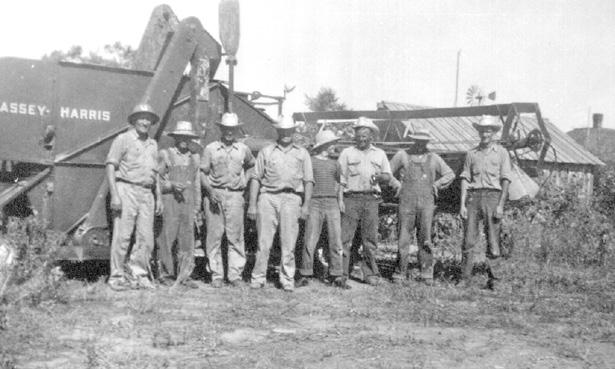
1 minute read
Farmers Mutual Insurance Association
THE HARVEST BRIGADE
By Peggy Sanders
Advertisement
This crew of men was ready to harvest on farms around Oral, S.D. On the far left is the combine’s original owner, Alfred Seder. Photo courtesy Peggy Sanders.
LOCAL | RELIABLE | SERVICE

fmiahull.com | 712.439.1722
Back in the days of World War II, even though the war was being fought overseas, Americans were hit hard by rationing. Steel, rubber, gasoline, sugar and many other foodstuffs needed to support the troops could only be purchased by the public when accompanied by ration stamps. The economy was vastly improved over the Great Depression, but more than money was needed to buy products. Factories were retooled to make airplanes, tanks, and other war needs. Against that backdrop, the War Food Administration asked Americans to sow 13.8 million more acres of wheat than the previous year, and somehow it had to be harvested. As is common in America, ingenuity came to the forefront. In this case Joe Tucker was the man with the plan. Tucker was a vice president and sales manager for the Massey-Harris Company in the US. He came up with a proposal to solve the harvest needs while keeping in mind the limited amounts of available steel. In 1944 Massey-Harris was given a quota to manufacture no more than 43,604 pull-type combines and 1,100 self-propelled Model 21 combines. Tucker proposed the theory of the Harvest Brigade to the U.S. War Production Board.
His plan was to allow Massey-Harris to obtain enough steel and other scarce raw materials to make an additional 500 Model 21s. In turn, the company would sell them with one stipulation: each purchaser would have to sign a contract and agree to harvest at least 2,000 acres of wheat with his combine. The War Production Board approved the program and the models were delivered. Each combine cost about $2,500.










